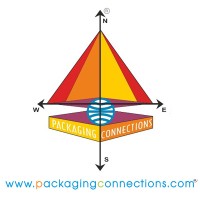

Activity
-
Exhibitor Segment Like - Pharmaceutical & Packaging Machinery,Pharma Formulations,Lab & Analytical Instruments,Lab Instruments,Lab Glassware,Lab Chemicals ,Contract Manufacturing,etc.
-
Mr. organic turns to paper packaging
The brand announced that it has completely moved its rice range to 100% paper packing, “specifically designed to be g
-
New range launch by wwp beauty in which ...
-
Turning apple waste into compostable pac...
As everybody knows Molded Pulp packaging created its value that it will compostable and recyclables by nature but by
-
Printing in new age packaging
Printing in packaging is always like the Associate of Packaging, different Packaging required different style and dif
-
Rt twist by techniplast brings the new s...
-
Switching to carbon neutral carton morri...
-
Digitisation in healthcare sector packag...
With pharmaceutical traceability and patient compliance high on the agenda, myHealthbox covered a topical subject and
-
Liquiglide + colgate- colgate sets to ex...
-
Webinar on plastic waste game changer - ...
Join our new Webinar on Plastic Waste Game Changer -Brought to you by our Sustainability Partner Twelve8 Technology, Naturally degrading plastics perfected by Packaging Experts in collaboration with Nanotechnologist in Material Science .Kindly register on https://lnkd.in/emMdPnRA.Webinar event will be on 9th March 2022 from 11:00AM to 12:00PM IST. -
Amcor launches new amfiber - paper based...
Amcor a global leader in developing and producing responsible packaging solutions, today launched a new platform of p
-
Security labels by schriener medipharm t...
The new security label wraps around the vial up to the level of the cap.
-
Yoloha brings eco-consciousness to yoga ...
Yoloha is a company that sets out to make things better.
-
Why isn't your all packaging is recyclab...
Recycling plays an important role in keeping plastic waste out of the environment but we know that, on its own, it wo
-
Centre notifies guidelines on plastic pa...
The Union ministry of environment, forest and climate change (MoEFCC) has notified guidelines on Extended Producer Re
-
Mondi’s 100% recyclable corrugated pac...
Mondi , global leader in Packaging & Paper , has reated a fully recyclable packaging solution for Warmhaus , a tu
-
Tetra pak and elvir join forces in a wor...
Tetra Pak, in partnership with Elvir, a subsidiary of Savencia Fromage & Dairy - a world leading milk processor -
-
Unilever predicts prices rises as packag...
The consumer goods giant reported its full year results with an underlying sales growth of 4.5% to €52.4bn; it is Uni
-
New cast pp film for lamination by innov...
“With the drive towards simplified packaging formats, and the need to develop mono material structures, Innovia Films
-
New recycle -ready flexible packaging by...










